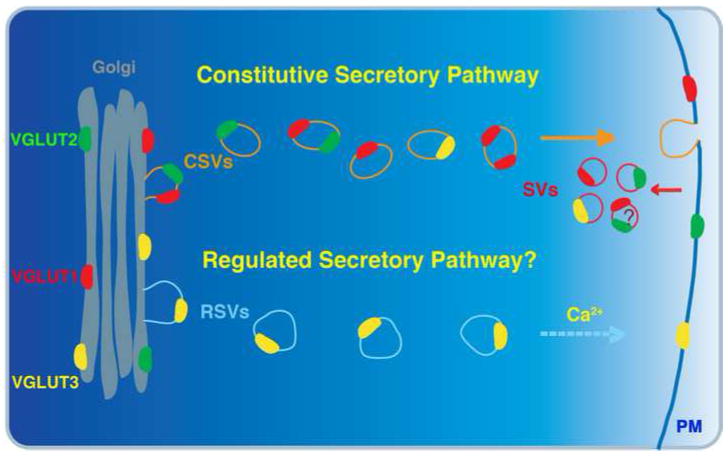Figure 1. VGLUT trafficking in neurons.
A schematic model for VGLUT sorting in neurons, based on current models of secretory vesicle trafficking, is depicted. During biogenesis, all three isoforms of VGLUTs may be delivered to the axon by trafficking to constitutive secretory vesicles (CSVs) at the level of the TGN. Constitutive exocytosis of CSVs could deliver VGLUTs to the cell surface in axons, where they could be incorporated into synaptic vesicles (SVs). In contrast, VGLUT3 is also observed in somatodendritic vesicles, suggesting that it may also sort to regulated secretory vesicles (RSVs), similarly to VMAT2. RSVs bud directly from the TGN as part of the regulated secretory pathway, with a full complement of the proteins that confer competence for regulated neurotransmitter release. RSVs could transport VGLUT3 to appropriate sites of release, either in dendrites or axons. In this case, VGLUT3-containing RSVs would fuse with the plasma membrane (PM) only upon stimulation, such as increased cytoplasmic Ca2+.

